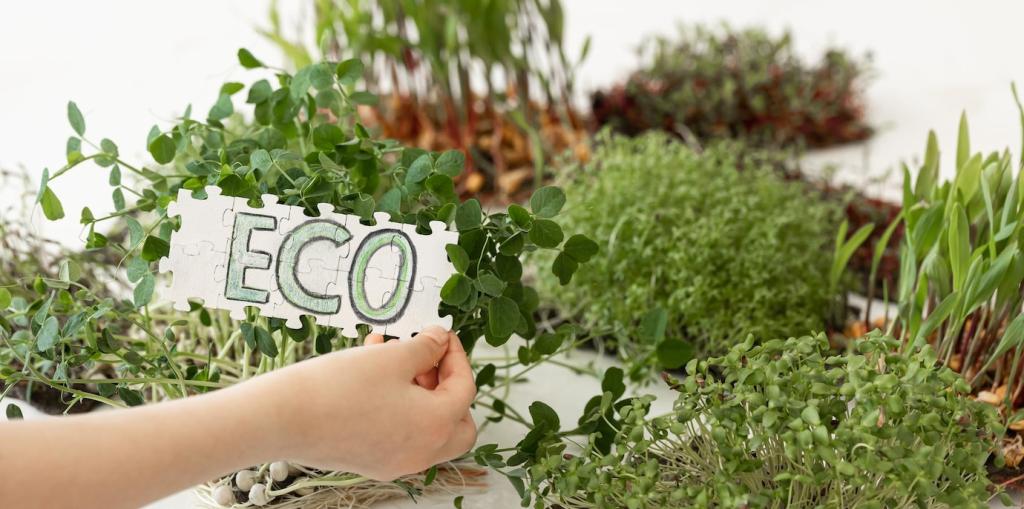Selected theme: Organic Paints and Finishes. Welcome to a home for healthier hues and tactile finishes made from plant oils, minerals, clay, and waxes—inviting you to breathe easier, live calmer, and craft beauty with intention.
From Plant to Pigment
Organic paints and finishes start with ingredients you can actually name: linseed and tung oils, casein, clay, lime, and earth pigments. These components create breathable surfaces with gentle sheen and warmth that synthetic films rarely match.
Binders, Solvents, and Additives—The Organic Way
Instead of petrochemical binders and heavy solvents, organic formulas rely on plant-based oils, natural resins like shellac, and citrus or water carriers. The result emphasizes low odor, lower emissions, and finishes that mature gracefully rather than simply hardening.
Health and Indoor Air Quality with Organic Coatings

Volatile organic compounds contribute to indoor air pollution and lingering odors. Many zero-VOC claims reference thresholds near 5 g/L, but always check technical data sheets and regional standards to confirm actual values for your chosen organic paint.
Preparation and Application: Let Materials Lead
Use mineral or casein primers that preserve breathability, especially on lime or clay substrates. Avoid dense, plastic primers that can trap moisture. Lightly sand glossy spots, fill hairline cracks with compatible filler, and dust thoroughly before your first coat.
Preparation and Application: Let Materials Lead
For wood, wipe on thin coats of linseed or tung oil, letting each layer penetrate before buffing. Seal with beeswax or hardwax oil for a tactile, repairable sheen. Always test on offcuts to see how grain and color deepen with your chosen finish.
Preparation and Application: Let Materials Lead
Apply multiple translucent passes rather than thick coats. Cross-hatch brushstrokes to create subtle movement that catches light beautifully. While drying, hues bloom and mellow, revealing mineral depth that flat, opaque acrylics simply cannot emulate.
Building a Natural Palette
Start with a small family of earth tones and one accent mineral pigment. Organic paints harmonize naturally, so even bold colors feel grounded. Notice how morning light cools blues while evening warmth enriches reds, shaping mood without shouting.
Mixing and Testing Without Regret
Blend pigments carefully and brush out large samples on primed cards. Tape them to different walls and view across several days. Log what changes in shade you see at dawn, noon, and night, then share your favorite swatches with our community.
A Small Story: The Faded Blue Door
We repainted an old entry with casein paint tinted by ultramarine and a touch of ivory black. Over months, the door developed a velvety patina, softening the blue. Neighbors asked for the recipe—proof that quiet color still turns heads.
Durability, Maintenance, and Real-Life Wear
Hallways, bedrooms, and living rooms reward breathable, hand-rubbed finishes that invite spot repairs. Kitchens and baths can benefit from mineral paints or soap finishes that balance wipeability with character, especially when paired with mindful ventilation.
Durability, Maintenance, and Real-Life Wear
Use soft sponges and mild soap to lift scuffs. Avoid aggressive scrubbing pads that can burnish matte textures. For oiled wood, a periodic maintenance soap or light re-oiling revives luster without stripping the surface back to bare.




Sampling and Mock-Ups
Create sample boards that mimic your actual surface—plaster texture, wood grain, or existing primer. Try two or three organic options side by side and journal results. Post photos, and tell us which sample feels right in changing light.
Share Your Progress and Subscribe
We’d love to see your before-and-after shots, pigment tests, and patina surprises. Comment with lessons learned, ask questions, and subscribe for weekly tips on organic paints and finishes, including fresh techniques and reader-led experiments.
Ask an Expert, Ask Each Other
Drop your toughest prep dilemmas and maintenance puzzles in the comments. Our community is generous with real-world fixes, and we gather the smartest tips into future posts so everyone keeps learning without wasting precious materials.
